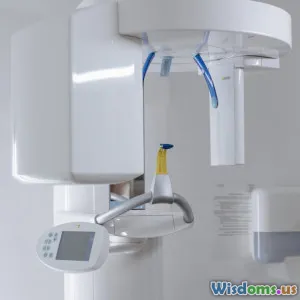
From Hype to Reality The True ROI of Business Process Automation
8 min read Discover the true ROI of Business Process Automation and how it moves from hype to tangible results in modern enterprises. (0 Reviews)
From Hype to Reality: The True ROI of Business Process Automation
Introduction
In an era defined by rapid technological shifts, Business Process Automation (BPA) has emerged as a transformative force reshaping how organizations operate. From ambitious promises promising moonshots of efficiency to revolutionary changes, automation has often been met with both enthusiasm and skepticism. But beyond the hype, what does the real Return on Investment (ROI) look like when businesses embrace BPA? Is it an indulgent tech trend or a pragmatic evolution that delivers tangible benefits?
This article dives deep into the true ROI of BPA — dispelling misconceptions and spotlighting how companies across industries have turned automation from a buzzword into meaningful operational and financial outcomes.
Understanding Business Process Automation
Business Process Automation refers to leveraging technology to execute recurring tasks and processes in a business where manual effort can be replaced. It includes tools such as robotic process automation (RPA), artificial intelligence (AI), workflow automation, and intelligent document processing.
The hype stems from BPA's promise to relieve employees from repetitive, mundane tasks, leading to increased productivity, reduced errors, and ultimately substantial cost savings. However, ROI from BPA is nuanced and contingent upon factors like process selection, implementation strategy, and integration.
Unpacking the ROI Components of BPA
- Labor Cost Reduction and Efficiency Gains
Automating routine functions can significantly cut down on labor costs. According to a 2022 Deloitte survey, organizations deploying RPA report an average reduction of 20-30% in costs related to human labor for automated tasks. For example, insurance companies use BPA to automatically process claims, reducing cycle times from days to hours and freeing staff to handle complex case management.
Case in Point: A leading global bank deployed an AI-powered bot for onboarding account requests, saving 15,000 person-hours annually, annually reducing operational expenses by nearly $1.2 million.
- Error Reduction and Compliance Improvement
Manual tasks are prone to human error, especially with complex procedures or high volumes. Automation enforces consistency and accuracy. This benefit is critical in heavily-regulated industries like healthcare and finance, where compliance lapses can cost millions in fines and erode consumer trust.
A PwC report highlights that automation helped one healthcare provider reduce billing errors by 90%, drastically improving revenue integrity.
- Faster Processing and Scalability
Automated processes work 24/7 without fatigue, accelerating throughput and enhancing service quality. This speed and reliability enable businesses to scale more flexibly—for example, e-commerce platforms automate order fulfillment workflows to handle seasonal surge spikes without staff burnout.
- Enhanced Employee and Customer Experience
By offloading repetitive work, BPA enhances employee satisfaction, allowing talented workers to focus on strategic and creative tasks. Simultaneously, customers benefit from faster resolutions and increased service reliability.
In a Salesforce study, 70% of customers reported higher satisfaction when service interactions were handled promptly through automation technologies.
- Strategic Insights and Continuous Improvement
BPA tools often incorporate analytics that provide insights into workflows, bottlenecks, and process variations. Companies leveraging these insights have a clear competitive advantage—enabling continuous process refinement, innovation, and informed decisions.
Moving Beyond the Hype: Measuring True ROI
While many organizations tout substantial automation ROI, it requires careful measurement and long-term perspective.
-
Initial Investments: Technology licenses, infrastructure, change management, and training can be significant upfront costs.
-
Process Complexity: The more intricate the process, the longer development and testing phases, impacting time to value.
-
Change Management: Employee resistance or lack of skills can slow adoption and benefits realization.
To accurately measure ROI, companies should track direct cost savings, productivity metrics, error rates, compliance improvements, and indirect benefits like employee engagement and scalability.
Example: UiPath case studies reveal that well-executed RPA initiatives can yield ROI in as little as 6 to 12 months, with typical payback periods ranging from one to two years depending on scale.
Real-World Success Stories Demonstrating BPA’s ROI
-
IBM: Reduced customer onboarding time by 75% through automated workflows, translating into faster revenue recognition and customer satisfaction.
-
ABB: Slashed invoice processing time by 85% leveraging AI-driven BPA, yielding over $10 million in annual savings.
-
Walmart: Uses BPA to monitor and rectify inventory discrepancies in real-time, improving supply chain efficiency and reducing stockouts.
These success stories highlight how BPA is a powerful tool when tailored strategically to business goals rather than chasing hype-driven deployments.
Challenges That Can Impact ROI
-
Over-automation: Automating poorly designed processes or without stakeholder engagement leads to suboptimal gains.
-
Data Quality Issues: Automation depends heavily on data accuracy; poor inputs yield flawed outputs.
-
Security Considerations: Automated processes must ensure robust security protocols to protect sensitive data.
-
Scalability Limits: Some BPA tools may struggle as operation complexity grows beyond initial scope.
Addressing these challenges with thoughtful planning and ongoing governance is critical for maximizing ROI.
Conclusion: From Promise to Profit
Business Process Automation is no longer merely a futuristic ambition; it is a present-day reality driving measurable returns. The true ROI transcends cost savings, encompassing improved agility, compliance, and employee empowerment.
Enterprises that approach automation as a strategic enabler—focused on targeted outcomes, involving people in the transition, and measuring results diligently—derive lasting value.
As the digital landscape evolves, BPA will remain a cornerstone of competitive advantage, shifting permanently from hype to proven reality.
Embrace BPA not just for automation’s sake, but to unlock efficiency, innovation, and growth in your organization.
Author's Note: Thoughtful implementation and continuous evaluation are keys to unlocking the full ROI of Business Process Automation. The future belongs to organizations that smartly blend human talent with intelligent automation.
Rate the Post
User Reviews
Popular Posts





















